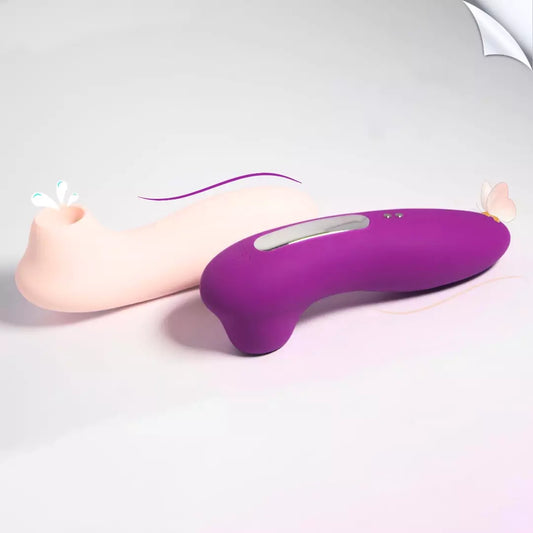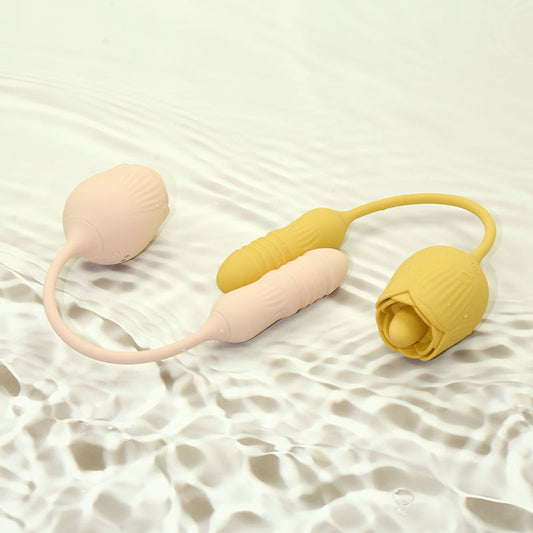Female Ejaculation refers to the removal of urethra fluid when sexual arousal occurs or during orgasm. It happens when fluid builds up within the bladder and is eliminated through the involuntary contractions of those pelvic muscles. While documented for ages female ejaculation is an unpopular and controversial subject for women and their companions.
The first recorded accounts of the phenomenon are from early Kama Sutra and early Oriental customs celebrating the diverse gender expression that women can express. In the West, the era of cultural oppression has led to a lack of acknowledgment of women's fluid release.
However, recent research and increased debate are increasing the frequency of female Ejaculation being accepted as a natural, enjoyable event that between 10 and 50 percent of women feel.
Knowing the science and facts regarding female Ejaculation could empower females to embrace fully and maximize the sexual aspect of their lives. The deconstruction of cultural taboos can lead women to enjoy the satisfaction they need in safe, confident, and consensual sexual encounters.
Common Myths and Misconceptions

It's Just Urine
A prevalent misconception has been that the female's ejaculatory fluid is just orgasm-induced Urine. However, research has revealed significant differences in the chemical composition of the fluid that distinguish this fluid from the Urine.
Urine is home to metabolites, such as creatinine and urea, uric acid, and various electrolytes. Female ejaculatory liquid is also a source of prostate-specific antigen (PSA) as well as prostate-specific acid (PSAP), prostate-specific acid (PSAP) as well as fructose and glucose.
PSA and PSAP are also present in male ejaculatory liquids generated by the prostate gland. In addition, the female Ejaculate contains just traces of Urine, even if it is released in orgasm.
The distinctive biochemical profile proves a distinct mechanism for fluid production by the Skene's glands rather than urination, which is responsible for most female Ejaculation.
It's Abnormal or Unhealthy
If they are not educated on the subject, most women think that female Ejaculation happens only infrequently or unusual. It could also indicate an underlying medical issue or pelvic issue if it occurs.
Recent research suggests that female Ejaculation is entirely within the norms of the range of female sexual reactions and experiences. There aren't any inherent negative risk factors or health effects with female Ejaculation.
Only Some Women Can Ejaculate
A third myth is that female Ejaculation can be an ability that is restricted to a small percentage of women because of anatomy or method. However, experts say that all women can release Ejaculatory fluid. This is because all women have Skene's glands and the ducts that connect and drain into the Urethral opening.
The glands of the Skene release liquid into the urethra after sufficient stimulation and arousal.
Although a small percentage of women have difficulties experiencing Ejaculation because of mental inhibitions or lack of motivation and arousal, the physical apparatus exists for every woman.
With the proper technique and comfort level, female Ejaculation can fall within the range of responses that women can attain.
The Science Behind Female Ejaculation

Understanding the anatomy and physiological mechanisms that are the basis for female Ejaculation can help clear any doubts about its roots and help women know how they feel it.
Skene's Glands and Prostatic Fluid
Skene's glands, which are small glandular structures that are located in the anterior part of the vagina at the lower portion of the urethra. They drain through ducts to the urethra on both sides.
They've also been called the female prostate since their secretions have the same biochemical components that are found in male prostate fluid and are more than Urine.
When sexual stimulation and arousal occur, The Skene's glands swiftly produce fluid, which is most of the Ejaculate that is released at orgasm. The fluid builds up near the urethral artery to be released during a climax.
Role of the G-Spot
The G-spot or Grafenberg spot is an area of the anterior vaginal wall, about midway between the pubic bone as well as the cervix, in which the Skene's glands are located internally. It is susceptible and expands upon stimulation because of its glands and erectile tissue.
Stimulation of the G-spot is typically associated with the triggering of female Ejaculation. The area is filled with fluid and blood from the glands in Skene's. When arousal occurs, it creates pressure inside, which increases until it reaches a point of involuntary exit through the urethral artery as the orgasmic waves approach.
How to Achieve Female Ejaculation

Many women have reported that a firm come-hither motion by applying pressure to the G-spot will always result in the sensation of Ejaculation. Other techniques that work are using powerful vibrations on the area or using clitoral and G-Spot stimulation at the same time.
Relaxation and letting go of any anxieties or mental tensions about Ejaculation are equally vital physiologically. If the levels of arousal are not adequate and accessible, Ejaculation might not occur despite techniques for physical stimulation. The participants should create an environment that is open and free of shame, allowing for this new reaction.
Benefits of Female Ejaculation
Beyond the unique experience, the experience of female Ejaculation may bring numerous benefits to sexual health, physical fitness, confidence, self-esteem, and relationships.
Greater Sexual Pleasure and Satisfaction
Ejaculation is associated with highly pleasurable feelings and a euphoric orgasmic release that is satisfying for a large number of women.
Studies using fMRI scans show that Ejaculation triggers areas of the brain that are involved in processing reward, motivation, and the feeling of satiety. Many report profoundly distinctive gasps when they are the brain can fully discharge the ejaculatory fluid.
Women find it highly satisfying both physically and emotionally, especially when they're free of stigma or shame. The intense sexual glow that follows the ejaculatory sex can lead to greater satisfaction with the sexual experience.
Emotional Release and Relief
The rapid release of hormones like prolactin and oxytocin during the ejaculation process can bring calm and emotional relaxation. The "love hormone" effect also increases social bonds and intimacy with partners sharing a novel's experience.
Women feel empowered and satisfied from fully accepting the variety of female sexual reactions and the capacity for pleasure. The release of fluids provides physical relief as a cathartic release men feel when they ejaculate.
Improved Pelvic Floor Muscle Tone
Full ejaculatory release requires powerful contractions of pelvic floor muscles that release excess fluid. Exercises in these muscles improve strength, elasticity, and endurance over time.
The stronger pelvic floor muscles aid in the control of the bowel and bladder as well as improve the flow of blood to the pelvic organs and increase sexual pleasure. The benefits spread across the body, enhancing stabilization of the core, breathing, and the ability to continence.
Overcoming Barriers to Embrace Ejaculation

Despite increasing awareness and the scientific evidence of female Ejaculation in general, social taboos persist, causing women to avoid or avoid having sex and releasing fluid. But knowing the cultural context, communicating your desires, and gaining confidence can help break down these barriers.
Letting Go of Shame and Stigma
The secrecy, shock, or humor society places on female Ejaculation frequently makes women view it as unnatural or shameful, even if they have experienced it.
However, the roots of this belief lie in paternalistic assumptions that were antiquated and aimed at reducing the pleasure of women and controlling female sexuality.
If it is accepted as a natural thing, women can instead take the splendors that are their bodies. Stigma is simply a reflection of a lack of open acceptance of the many ways women express their sexuality.
Communication with Your Partner
Women are often reluctant to discuss or engage in female Ejaculation because of fear that their partners will react. Cultures that primarily focus on male pleasure and ego can hinder female partners from assisting women in seeking out the possibility of Ejaculation.
However, honest, open communication is a way to overcome these obstacles. Instruct your partner about the science behind Ejaculation and how it can reduce concerns about urinary incontinence or other irregularities.
Discuss your interests in studying the possibility of Ejaculation to enhance enjoyment and comfort that ejaculating with your partner will strengthen the bond between you.
Finding a supportive partner and commitment to female satisfaction increases confidence and ease. This can help rewire the mental memory as time passes to unleash Ejaculation's full power.
Making Ejaculation a Natural Part of Lovemaking
Although effort and specific methods could be necessary initially, female Ejaculation must be felt to be part of natural arousal and not a gimmick. Some couples use it for amusement but do not integrate it into routine relationship-building.
Partners should be patient and have a low-pressure approach to enjoyment and discovery. Keep stimulation sessions fun, and do not treat Ejaculation as it is a goal to perform, which can create anxiety. Being present and in tune with the body and response each allows Ejaculation to have a suitable space to develop.
As time passes, Ejaculation seamlessly blends into the range of pleasurable reactions available to couples to create their intimate moments in the way they want.
Conclusion
Female Ejaculation is a powerful manifestation of feminine sexuality and expression. Once free of the stigma of shame and sexiness, females can discover an abundance of joyous possibilities in the space between them.
Most importantly, understanding the female nature of Ejaculation allows women to respect their bodies and indulgences in their own way. They can make their own choices regarding Ejaculation according to their sexual desires and not on pressures from outside culture or the ego of a partner.
Although it is necessary to begin with some education and investigation, Ejaculation can be an organic expression of passion when women feel empowered about their sexuality. Partners should offer guidance and assistance to make this possible. However, the reward will be the most intimate connection shared by all.
With a deep understanding of oneself, as well as open communication and unconditional love, Female Ejaculation is now sacred. It's proof that sexual satisfaction can be achieved when women's voices guide the way.
FAQs
Q1. What proportion of women Ejaculate?
The results of surveys show that anything from 10% to more than half of all women have reported having been ejaculated. Many sexuality researchers believe that nearly all women have the physical ability to perform.
Q2. Do female ejaculations always go with gasps?
Not necessarily. Women report ejaculating before getting orgasmic, whereas others have intense orgasms but no visible release of fluid. Orgasm and Ejaculation often co-occur. However, they may also operate independently.
Q3. Is female Ejaculation as effective as squirting?
In essence, it is, but squirting is a greater volume of fluid expulsion. Both refer to the removal of fluid during the peak of sexual arousal—however, the latter indicates a lesser quantity.
Q4. How much fluid is usually released?
Research suggests that the average is approximately 3-5mL (about one teaspoon), but the amounts can vary widely. Some women experience only the genital area being moistened in small amounts regions, while some squirt more fluids when spraying.
Q5. What does female Ejaculate taste like?
The fluid used to ejaculate females generally has a semen-like flavor that is sweet due to the presence of glucose and fructose. The participants are usually open to the pleasing flavor profile when they feel comfortable with the concept.







